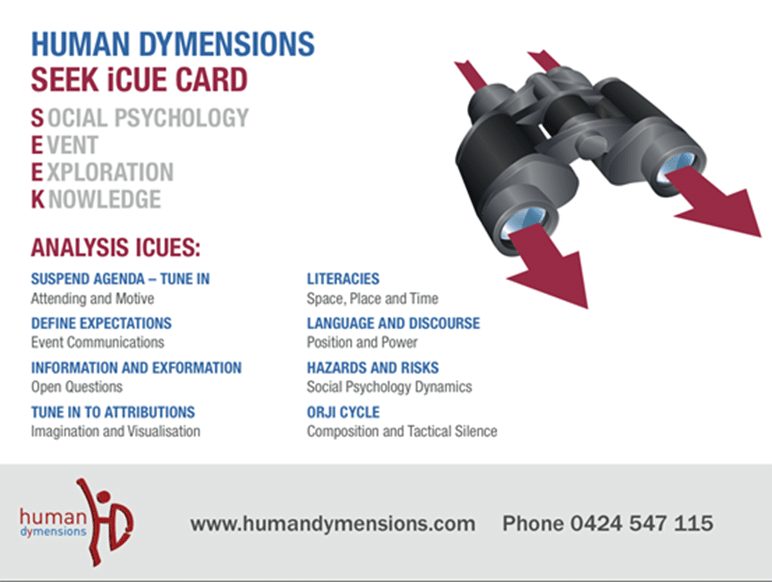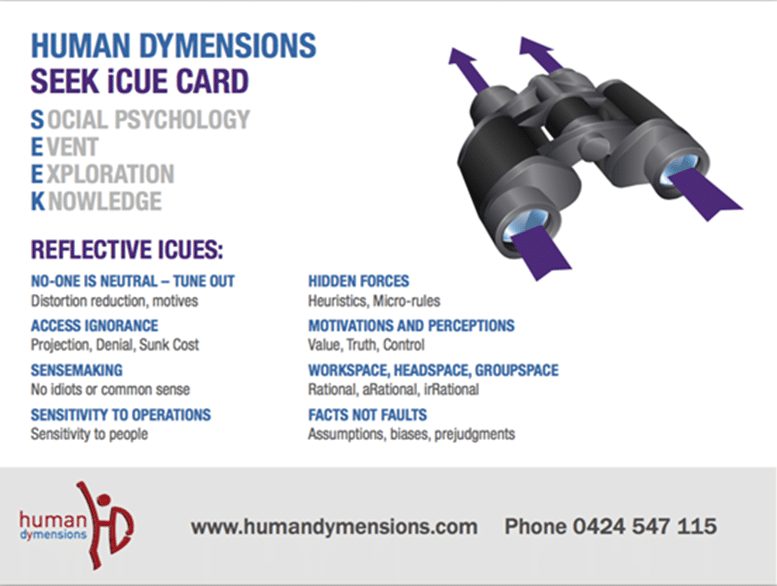Safety Investigations – Whodunit?
 Nothing is better for a successful TV series than a whodunit. The popularity of CSI and a host of shows demonstrates how much we like to be clever in hindsight. In safety investigations it’s a whodunit, whatwasdunit, howtheydunit and, whytheydunit. When I look at safety investigation packages I get astounded at what is missing.
Nothing is better for a successful TV series than a whodunit. The popularity of CSI and a host of shows demonstrates how much we like to be clever in hindsight. In safety investigations it’s a whodunit, whatwasdunit, howtheydunit and, whytheydunit. When I look at safety investigation packages I get astounded at what is missing.
One of the foundations of any investigation should be knowledge of self rather than a fixation on technique. Most safety investigation systems on the market are about technique (checklist and method) rather than on the nature of the investigator (bias and methodology). The beginning of intelligence is safety investigations is not the way you use a camera or probe for clues in the past but more importantly questions about self, personality, culture, sub-culture and social psychological determinants of decision making. All these elements are critical to my SEEK (Social Psychology Event Exploration Knowledge) Program.
I was recently called into a situation after the investigators had left and prepared their report and, was astounded at what was missing. The whole focus of the report was on mechanics, physicalities, objects and seeking blame. In the end they had a reason for the event but it was simple and black and white, many of the complexities that had compounded pre-decision making in the event were all missing from the report. Nothing is better for the distortion of social psychological context than the discourse of zero and the language of ‘all accidents are preventable’. If you take such nonsense in your head into an investigation, no wonder you find the attributions you desire.
Don’t get me wrong, the common elements in most investigation programs are helpful, although reductionist. I certainly utilize some of these in the way I investigate events but it doesn’t help hindsight to ignore the elephant in the room. In my training we support all event investigation methods but add value to them by complementary skills and understandings in the social psychology of risk. Those who complete the SEEK program have a much better idea of all the biases that affect the way humans investigate. The Human Dymensions tool that participants receive complements the training and is attached to give an indication of the kinds of things explored in the training. I will discuss just a few elements of the SEEK training to give an idea of what is perceived to be important to a social psychology of risk investigation. The tool (attached) not only works on the principles of shortsightedness and longsightedness but also on the semiotics of the Human Dymensions iCUE (risk intelligence). One’s iCUE is the risk equivalent of one’s IQ (one of Human Dymensions’ bedrock concepts that anchors the Program).
- One of the first things an investigator should be able to do is ‘suspend their agenda’. In other words, understanding consciousness of what we bring to an investigation, admission of personal and psychological bias enables a better investigation. The investigator needs to also understand what part unconsciousness plays in decision making.
-
Another core element of the training is to understand the nature of exformation (Norretranders). In many ways it is easy to detect information and gather data, it is much more skill to discover what one doesn’t know or what has been omitted. Understanding human and cultural defensiveness and such dynamics as reaction formation are critical for a sophisticated sense of investigation.
-
Understanding visual and special literacy is critical to investigation. Understanding how social arrangements and how space and place affect decision making is critical to understanding risk.
-
Understanding the ORJI cycle (Schein – Process Consultation Revisited) is also critical to investigation methodology. ORJI is about ‘Reciprocal and Interactive Communication Effects’ (p. 128) and understands how Open Communication, Unwitting Leakage, Confiding and Emotional Contagion and critical to investigation. This is what Schein calls the ‘Intrapsychic Process’.
There is of course much more to the 4 day program than a tool and a few concepts, we also use micro-training (video practice), Hofstede’s Cultural Compass, personality indicator work, Weick’s core principles (Organisational Sensemaking and Collective Mindfulness) and, a host of core social psychological understandings to help develop a more sophisticated approach to investigations.
If this Program is of interest to you please contact admin@humandymensions.com





Do you have any thoughts? Please share them below